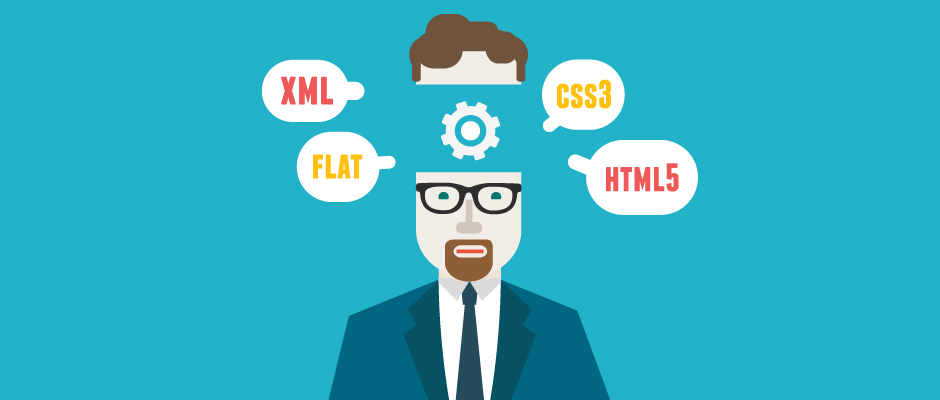The Power of Modern CSS: Variables, Container Queries, and :has()
Jul 28, 2025 am 03:52 AMCSS variables, container queries, and the :has() pseudo-class are transforming modern CSS by enabling dynamic, component-based designs without relying on JavaScript. 1. CSS variables allow reusable, dynamic values for consistent theming and real-time updates via JavaScript. 2. Container queries make components responsive based on their container’s size, not just the viewport, improving reusability in complex layouts. 3. The :has() pseudo-class enables conditional styling by selecting parents based on their children or siblings, reducing the need for JavaScript and enhancing accessibility. Together, these features make CSS more expressive, maintainable, and production-ready in modern browsers.

Modern CSS has evolved far beyond simple styling—today, it’s a powerful tool that lets developers tackle complex layouts, responsive designs, and dynamic interactions directly in the stylesheet. Three standout features—CSS custom properties (variables), container queries, and the :has() pseudo-class—are transforming how we write and think about CSS. Let’s break down how each one works and why they’re game-changers.

CSS Variables: Dynamic Styling Without JavaScript
CSS variables (officially called custom properties) allow you to define reusable values right in your CSS. This makes themes, design tokens, and global style changes much easier to manage.
:root {
--primary-color: #007bff;
--border-radius: 8px;
--spacing: 1rem;
}
.button {
background-color: var(--primary-color);
border-radius: var(--border-radius);
padding: var(--spacing);
}Why they’re powerful:

- Theme switching: Change colors, fonts, or spacing globally with a single class toggle.
- Component consistency: Define design tokens once and reuse them across components.
- Dynamic updates: Change values via JavaScript, enabling real-time theme switches.
document.documentElement.style.setProperty('--primary-color', 'purple');Variables aren’t just for colors—they can store any CSS value: sizes, shadows, even entire animation definitions.
Container Queries: Responsive Design Based on Component Size
For years, media queries tied responsiveness to the viewport. But what if a component needs to adapt based on its own container—not the screen size? That’s where container queries come in.

First, you define a container:
.card-container {
container-type: inline-size;
container-name: card;
}Then, apply styles based on the container’s width:
@container card (min-width: 300px) {
.card {
display: flex;
gap: 1rem;
}
}
@container card (min-width: 500px) {
.card-header {
font-size: 1.5rem;
}
}Why they matter:
- Truly reusable components: A card can respond to its space, whether it’s in a sidebar or full-width.
- Better composability: No more passing props or classes to adjust layout based on context.
- Future of component-driven design: Works beautifully with web components and design systems.
Container queries are especially useful in grid layouts, dashboards, or CMS-driven sites where content placement is dynamic.
:has() – The "Parent Selector" We’ve Waited For
For years, CSS lacked a way to select an element based on its children or following siblings. :has() finally closes that gap. Think of it as a "parent selector" or "relational selector."
Examples:
/* Style a list only if it has links */
ul:has(a) {
background: #f0f0f0;
padding: 1rem;
}
/* Highlight a form when it contains an invalid input */
form:has(input:invalid) {
border: 2px solid red;
}
/* Style a heading only if followed by a long paragraph */
h2:has( p:nth-of-type(2)) {
margin-bottom: 1rem;
}Why it’s revolutionary:
- Conditional styling: Apply styles based on content structure.
-
Reduce JavaScript: No more adding
.has-errorsclasses via JS—CSS can detect the state. - Improved accessibility: Visually style containers based on their content without extra hooks.
Browser support is solid in modern browsers (Chrome, Safari, Firefox 121 ), but check for older environments.
These three features—variables, container queries, and :has()—show how modern CSS is becoming more expressive, context-aware, and component-friendly. You don’t need a framework or JavaScript to create smart, adaptive interfaces. With a few lines of CSS, you can build more resilient, maintainable UIs.
Basically, if you’re still writing CSS like it’s 2015, it’s time to level up. These tools are no longer experimental—they’re practical, performant, and ready for production.
The above is the detailed content of The Power of Modern CSS: Variables, Container Queries, and :has(). For more information, please follow other related articles on the PHP Chinese website!

Hot AI Tools

Undress AI Tool
Undress images for free

Undresser.AI Undress
AI-powered app for creating realistic nude photos

AI Clothes Remover
Online AI tool for removing clothes from photos.

Clothoff.io
AI clothes remover

Video Face Swap
Swap faces in any video effortlessly with our completely free AI face swap tool!

Hot Article

Hot Tools

Notepad++7.3.1
Easy-to-use and free code editor

SublimeText3 Chinese version
Chinese version, very easy to use

Zend Studio 13.0.1
Powerful PHP integrated development environment

Dreamweaver CS6
Visual web development tools

SublimeText3 Mac version
God-level code editing software (SublimeText3)

Hot Topics
 How to use PHP to build social sharing functions PHP sharing interface integration practice
Jul 25, 2025 pm 08:51 PM
How to use PHP to build social sharing functions PHP sharing interface integration practice
Jul 25, 2025 pm 08:51 PM
The core method of building social sharing functions in PHP is to dynamically generate sharing links that meet the requirements of each platform. 1. First get the current page or specified URL and article information; 2. Use urlencode to encode the parameters; 3. Splice and generate sharing links according to the protocols of each platform; 4. Display links on the front end for users to click and share; 5. Dynamically generate OG tags on the page to optimize sharing content display; 6. Be sure to escape user input to prevent XSS attacks. This method does not require complex authentication, has low maintenance costs, and is suitable for most content sharing needs.
 PHP creates a blog comment system to monetize PHP comment review and anti-brush strategy
Jul 25, 2025 pm 08:27 PM
PHP creates a blog comment system to monetize PHP comment review and anti-brush strategy
Jul 25, 2025 pm 08:27 PM
1. Maximizing the commercial value of the comment system requires combining native advertising precise delivery, user paid value-added services (such as uploading pictures, top-up comments), influence incentive mechanism based on comment quality, and compliance anonymous data insight monetization; 2. The audit strategy should adopt a combination of pre-audit dynamic keyword filtering and user reporting mechanisms, supplemented by comment quality rating to achieve content hierarchical exposure; 3. Anti-brushing requires the construction of multi-layer defense: reCAPTCHAv3 sensorless verification, Honeypot honeypot field recognition robot, IP and timestamp frequency limit prevents watering, and content pattern recognition marks suspicious comments, and continuously iterate to deal with attacks.
 How to build a PHP Nginx environment with MacOS to configure the combination of Nginx and PHP services
Jul 25, 2025 pm 08:24 PM
How to build a PHP Nginx environment with MacOS to configure the combination of Nginx and PHP services
Jul 25, 2025 pm 08:24 PM
The core role of Homebrew in the construction of Mac environment is to simplify software installation and management. 1. Homebrew automatically handles dependencies and encapsulates complex compilation and installation processes into simple commands; 2. Provides a unified software package ecosystem to ensure the standardization of software installation location and configuration; 3. Integrates service management functions, and can easily start and stop services through brewservices; 4. Convenient software upgrade and maintenance, and improves system security and functionality.
 What are common CSS browser inconsistencies?
Jul 26, 2025 am 07:04 AM
What are common CSS browser inconsistencies?
Jul 26, 2025 am 07:04 AM
Different browsers have differences in CSS parsing, resulting in inconsistent display effects, mainly including the default style difference, box model calculation method, Flexbox and Grid layout support level, and inconsistent behavior of certain CSS attributes. 1. The default style processing is inconsistent. The solution is to use CSSReset or Normalize.css to unify the initial style; 2. The box model calculation method of the old version of IE is different. It is recommended to use box-sizing:border-box in a unified manner; 3. Flexbox and Grid perform differently in edge cases or in old versions. More tests and use Autoprefixer; 4. Some CSS attribute behaviors are inconsistent. CanIuse must be consulted and downgraded.
 Describe the `vertical-align` property and its typical use cases
Jul 26, 2025 am 07:35 AM
Describe the `vertical-align` property and its typical use cases
Jul 26, 2025 am 07:35 AM
Thevertical-alignpropertyinCSSalignsinlineortable-cellelementsvertically.1.Itadjustselementslikeimagesorforminputswithintextlinesusingvalueslikebaseline,middle,super,andsub.2.Intablecells,itcontrolscontentalignmentwithtop,middle,orbottomvalues,oftenu
 What is the accent-color property?
Jul 26, 2025 am 09:25 AM
What is the accent-color property?
Jul 26, 2025 am 09:25 AM
accent-color is an attribute used in CSS to customize the highlight colors of form elements such as checkboxes, radio buttons and sliders; 1. It directly changes the default color of the selected state of the form control, such as changing the blue check mark of the checkbox to red; 2. Supported elements include input boxes of type="checkbox", type="radio" and type="range"; 3. Using accent-color can avoid complex custom styles and extra DOM structures, and maintain native accessibility; 4. It is generally supported by modern browsers, and old browsers need to be downgraded; 5. Set accent-col
 CSS transitions tutorial
Jul 26, 2025 am 09:30 AM
CSS transitions tutorial
Jul 26, 2025 am 09:30 AM
CSStransitionsenablesmoothpropertychangeswithminimalcode,idealforhovereffectsandinteractivefeedback.1.Usethesyntaxtransition:propertydurationtiming-functiondelay;todefinetransitions,liketransition:background-color0.3sease0.1s;.2.Specifytransition-pro
 How to change text color in CSS?
Jul 27, 2025 am 04:25 AM
How to change text color in CSS?
Jul 27, 2025 am 04:25 AM
To change the text color in CSS, you need to use the color attribute; 1. Use the color attribute to set the text foreground color, supporting color names (such as red), hexadecimal codes (such as #ff0000), RGB values (such as rgb(255,0,0)), HSL values (such as hsl(0,100%,50%)), and RGBA or HSLA with transparency (such as rgba(255,0,0,0.5)); 2. You can apply colors to any element containing text, such as h1 to h6 titles, paragraph p, link a (note the color settings of different states of a:link, a:visited, a:hover, a:active), buttons, div, span, etc.; 3. Most






